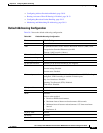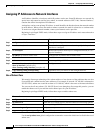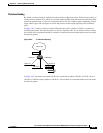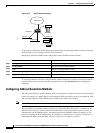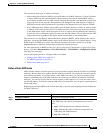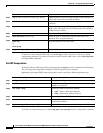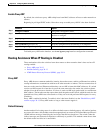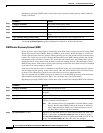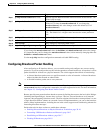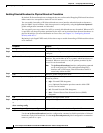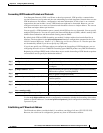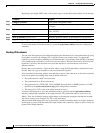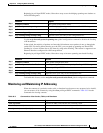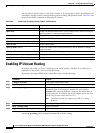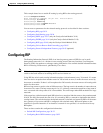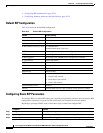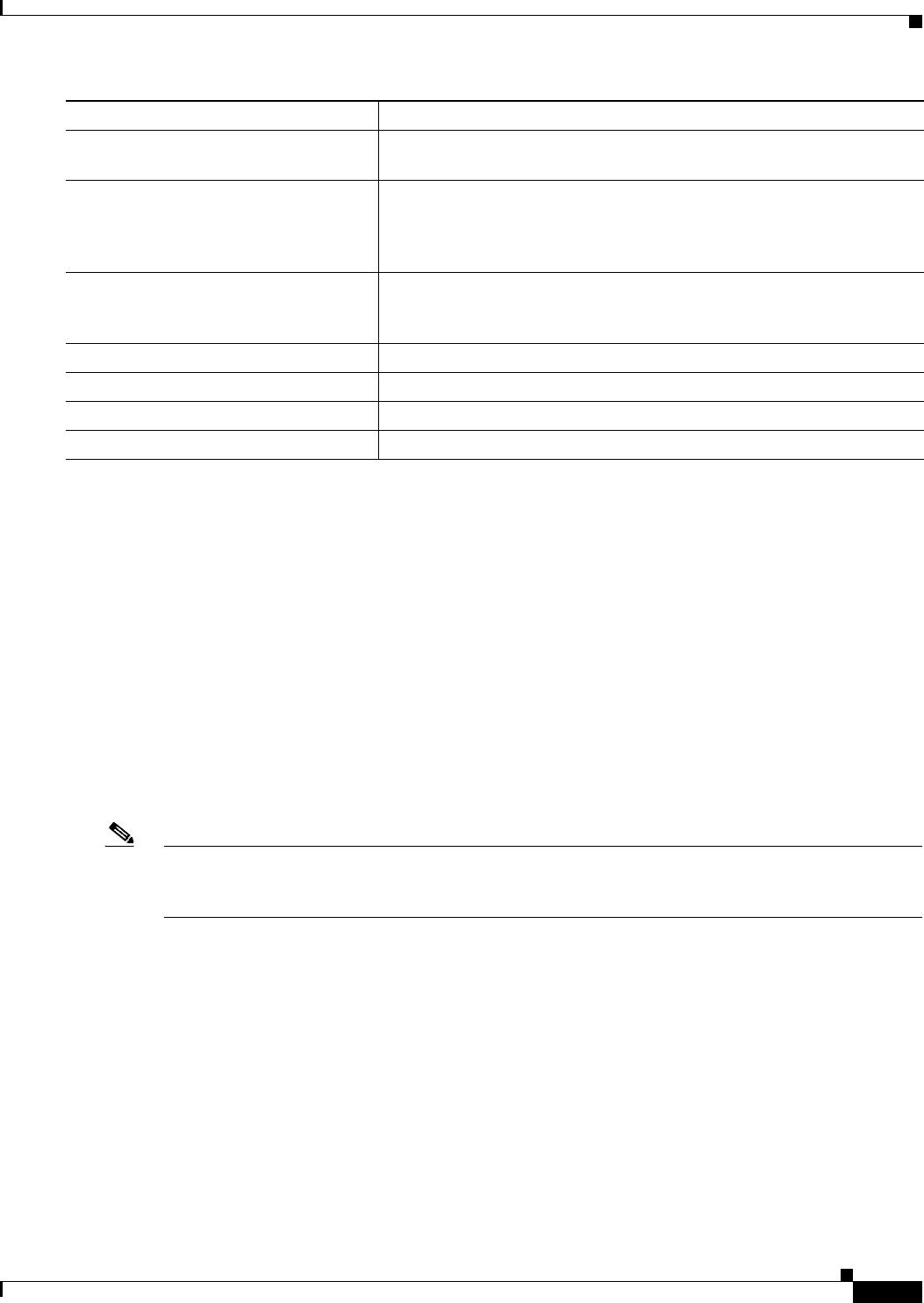
38-15
Cisco Catalyst Switch Module 3110 and 3012 for IBM BladeCenter Software Configuration Guide
OL-12189-01
Chapter 38 Configuring IP Unicast Routing
Configuring IP Addressing
If you change the maxadvertinterval value, the holdtime and minadvertinterval values also change.
It is important that you first change the maxadvertinterval value, before manually changing either the
holdtime or minadvertinterval values.
Use the no ip irdp interface configuration command to disable IRDP routing.
Configuring Broadcast Packet Handling
After configuring an IP interface address, you can enable routing and configure one or more routing
protocols, or you can configure the way the switch responds to network broadcasts. A broadcast is a data
packet destined for all hosts on a physical network. The switch supports these kinds of broadcasting:
• A directed broadcast packet sent to a specific network or series of networks. A directed broadcast
address includes the network or subnet fields.
• A flooded broadcast packet sent to every network.
Note You can also limit broadcast, unicast, and multicast traffic on Layer 2 interfaces by using the
storm-control interface configuration command to set traffic suppression levels. For more information,
see Chapter 25, “Configuring Port-Based Traffic Control.”
Routers provide some protection from broadcast storms by limiting the extent to the local cable. Bridges
(including intelligent bridges), because they are Layer 2 devices, forward broadcasts to all network
segments, thus propagating broadcast storms. The best solution to the broadcast storm problem is to use
a single broadcast address scheme on a network. In most IP implementations, you can set the broadcast
address. Many implementations, including the one in the switch, support several addressing schemes for
forwarding broadcast messages.
Perform the tasks in these sections to enable these schemes:
• Enabling Directed Broadcast-to-Physical Broadcast Translation, page 38-16
• Forwarding UDP Broadcast Packets and Protocols, page 38-17
• Establishing an IP Broadcast Address, page 38-17
• Flooding IP Broadcasts, page 38-18
Step 6
ip irdp maxadvertinterval seconds (Optional) Set the IRDP maximum interval between advertisements. The
default is 600 seconds.
Step 7
ip irdp minadvertinterval seconds (Optional) Set the IRDP minimum interval between advertisements. The
default is 0.75 times the maxadvertinterval. If you change the
maxadvertinterval, this value changes to the new default (0.75 of
maxadvertinterval).
Step 8
ip irdp preference number (Optional) Set a device IRDP preference level. The allowed range is –2
31
to 2
31
. The default is 0. A higher value increases the router preference
level.
Step 9
ip irdp address address [number] (Optional) Specify an IRDP address and preference to proxy-advertise.
Step 10
end Return to privileged EXEC mode.
Step 11
show ip irdp Verify settings by displaying IRDP values.
Step 12
copy running-config startup-config (Optional) Save your entries in the configuration file.
Command Purpose



